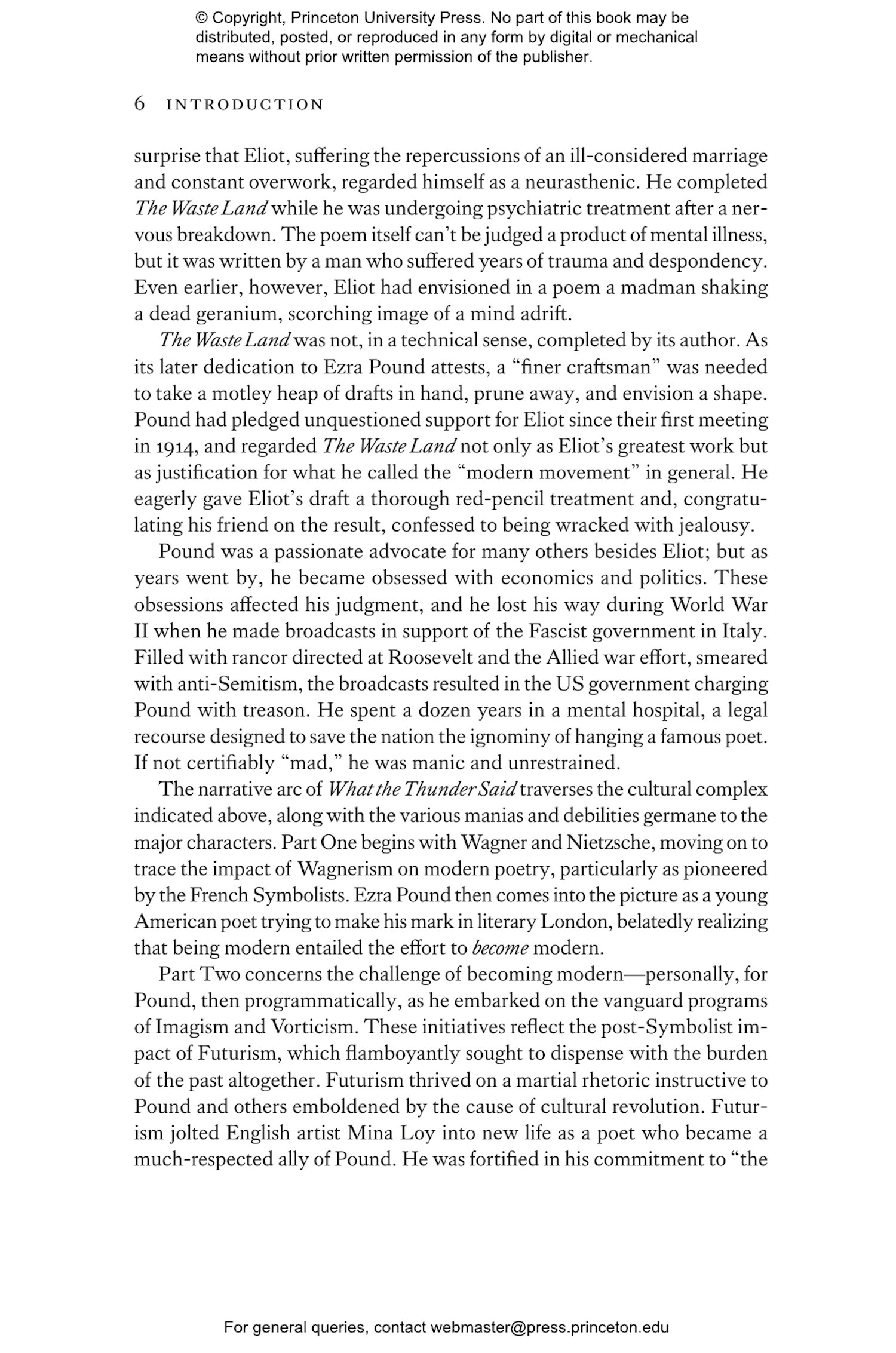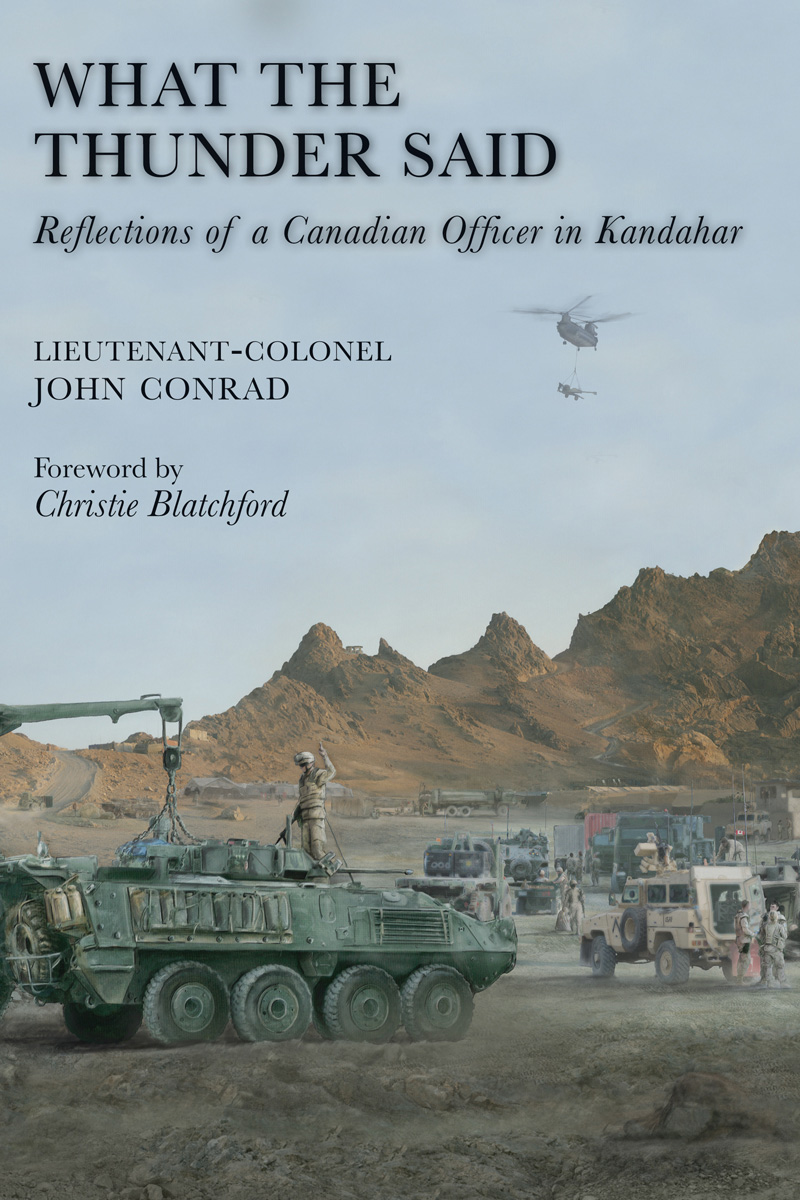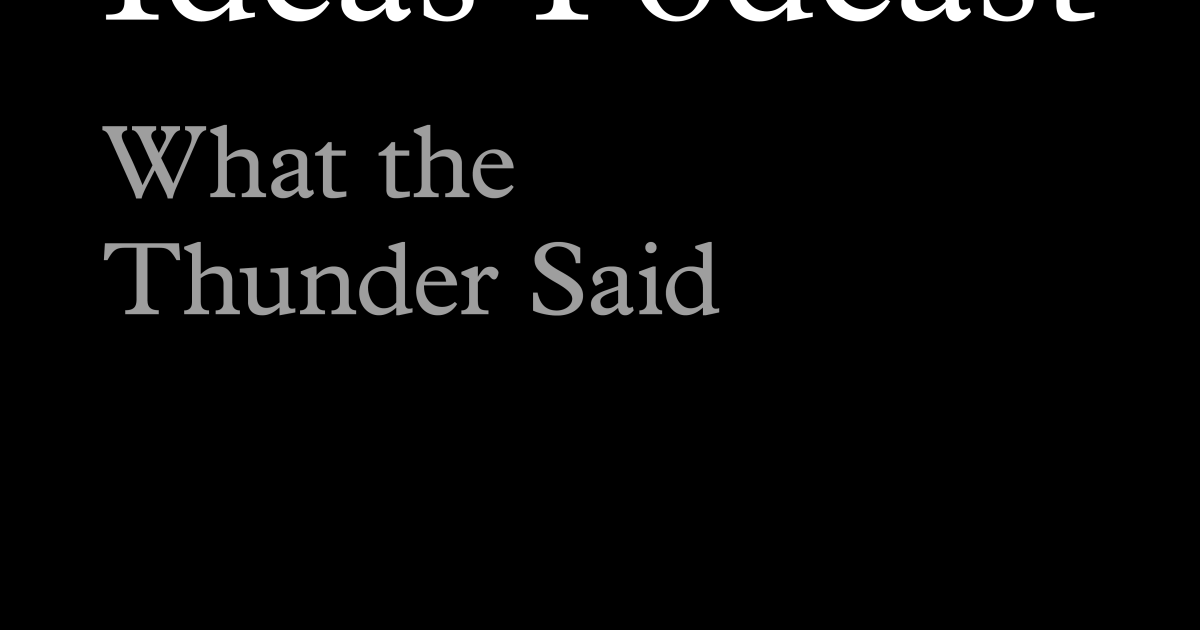
WHAT THE THUNDER SAID LIMITED EDITION PRINT Claire Gill Fine Art
What the Thunder Said traces the origins, reception, and enduring influence of the poem, from its roots in Wagnerism and French Symbolism to the way its strangely beguiling music continues to inspire readers. Along the way, we learn about Eliot's storied circle, including Wyndham Lewis, Virginia Woolf, and Bertrand Russell, and about poets like.

What the Thunder Said Vol. 9
What the Thunder Said [ 41] After the torchlight red on sweaty faces. After the frosty silence in the gardens. After the agony in stony places. The shouting and the crying. Prison and palace and reverberation. Of thunder of spring over distant mountains. He who was living is now dead. We who were living are now dying.

What The Thunder Said One Yellow Rabbit
T. S. Eliot Study Guide Flashcards PLUS Summary & Analysis Summary The Waste Land Section V: "What the Thunder Said" Summary The final section of The Waste Land is dramatic in both its imagery and its events.

What The Thunder Said by T.S Eliot Summary & Analysis
The Waste Land What the Thunder Said | Shmoop The Waste Land What the Thunder Said Back What the Thunder Said Lines 322-330 After the torchlight red on sweaty faces After the frosty silence in the gardens After the agony in stony places The shouting and the crying Prison and palace and reverberation Of thunder of spring over distant mountains

Thunder Said Energy and the Waste Land? Thunder Said Energy
[What the Thunder Said] wonderfully traces the evolution of literary thought, and [Rasula's] syntheses feel fresh and exciting. The result is a refreshing reappraisal of a classic." ― Publishers Weekly starred review "[What the Thunder Said is] adding more weight to the headstone that marks Eliot."

SyFy's Aftermath S1E07 "What the Thunder Said" (7 Pics) NerdSpan
A Short Analysis of T. S. Eliot's 'What the Thunder Said' A reading of the fifth section of The Waste Land - analysed by Dr Oliver Tearle 'What the Thunder Said' concludes The Waste Land, T. S. Eliot's landmark 1922 work of modernist poetry. In many ways, this is the most difficult section of The Waste Land to analyse.

What the Thunder Said Vol. 7 Page 17
V. What the Thunder said After the torchlight red on sweaty faces After the frosty silence in the gardens After the agony in stony places The shouting and the crying Prison and palace and reverberation Of thunder of spring over distant mountains He who was living is now dead We who were living are now dying With a little patience

What The Thunder Said
Despite the title of Eliot's poem suggesting drought and desert landscapes, The Waste Land is full of water-symbolism.There is the drowned Phoenician sailor, Phlebas, in the section 'Death by Water'; there is the coming of the rain in the final section, 'What the Thunder Said', and there is the recurring figure of the River Thames, especially in the poem's third section, 'The.

A Short Analysis of T. S. Eliot's 'What the Thunder Said' Interesting
What the Thunder Said. 322 After the torchlight red on sweaty faces. 323 After the frosty silence in the gardens. 324 After the agony in stony places. 325 The shouting and the crying. 326 Prison and palace and reverberation. 327 Of thunder of spring over distant mountains. 328 He who was living is now dead.

What the Thunder Said Princeton University Press
Hooded Christ: The poet refers to the journey of two disciples of Christ who proceeded to Emmaus to verify the fact of Christ's rebirth. One of the disciples finds a hooded figure walking along with him. This hooded person is actually Christ, who helps his followers in their spiritual quest.

FULL TEXT EXPLANATION OF WASTELAND'S WHAT THE THUNDER SAID PART II IN
Welcome to What the Thunder Said, a site devoted to the works and life of T.S. Eliot. Whether you are a casual reader or a devoted lover, it is our hope that this site can bring you closer to the man and his works. Any questions or suggestions may be sent to the creator, Raymond Camden. The last update was on January 1, 2021.

Thunder Said Phase Change Materials Review
Quick answer: The terms "Datta, Dayadhvam, Damyata" in the section of The Waste Land entitled "What the Thunder Said" signify a possible way of escaping from the malaise of the fractured.

What the thunder said TheArticle
Death in life/living death. From the poem's epigraph onwards, the idea of a living death is established as one of the key themes of The Waste Land. The epigraph is from Petronius' scurrilous Roman novel, Satyricon. The speaker sees the Sibyl at Cumae hanging in a cage or bottle, and when he asks her what she wants, the Sibyl replies, 'I.

What the Thunder Said Dundurn
What the Thunder Said traces the origins, reception, and enduring influence of the poem, from its roots in Wagnerism and French Symbolism to the way its strangely beguiling music continues to inspire readers. Along the way, we learn about Eliot's storied circle, including Wyndham Lewis, Virginia Woolf, and Bertrand Russell, and about poets.

What the Thunder said by T.S. Eliot The Waste Land Section 5 YouTube
What the Thunder Said. This is the final part of the 'Wasteland' and therefore, despite destruction and there is the emergence of images of hope and salvation through the arrival of water. The structure remains fragmented and irregular thereby depicting the fragmentation of society. Eliot emphasises the chaos and disorganisation of society.

Ideas Podcast What the Thunder Said Princeton University Press
5. What the Thunder Said - by T. S. Eliot V. WHAT THE THUNDER SAID After the torchlight red on sweaty faces After the frosty silence in the gardens After the agony in stony places The shouting and the crying Prison and palace and reverberation Of thunder of spring over distant mountains He who was living is now dead We who were living are now dying